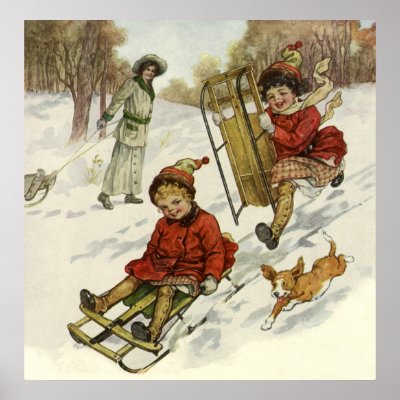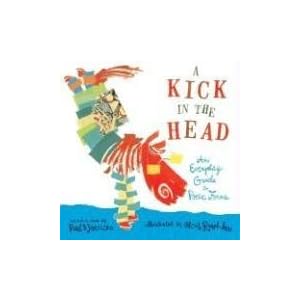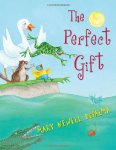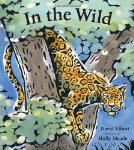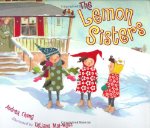First here is a brief description of the book and its author:
On August 28, 1963—the day of Martin Luther King Jr.'s famous "I Have a Dream" speech—segregation ended at Gwynn Oak amusement park in Maryland when eleven-month old Sharon Langley, her dad beside her, became the first black child to ride the park's famous merry-go-round. As Amy Nathan tells the story of how individuals in Baltimore integrated one amusement park in their town, she also gives an overview of the history of segregation and the civil rights movement. Round and Round Together creates a new civil rights symbol—the Gwynn Oak carousel is now the Smithsonian Carousel which thousands of kids enjoy each year.
Round and Round Together is illustrated with archival photos from newspapers and other sources, as well as personal photos from family albums of individuals interviewed for the book and a timeline of major civil rights events.
 Amy Nathan is an award-winning author of several books for young people including The Young Musician's Survival Guide, Count on Us: American Women in the Military, Yankee Doodle Gals: Women Pilots of World War II, Meet the Musicians, and Surviving Homework.
Amy Nathan is an award-winning author of several books for young people including The Young Musician's Survival Guide, Count on Us: American Women in the Military, Yankee Doodle Gals: Women Pilots of World War II, Meet the Musicians, and Surviving Homework.Now, I will share Amy's letter with you.
Dear TTLG:
I grew up in Baltimore, not far from the amusement park in Round and Round Together.
I never knew of its link to the 1963 March on Washington until four years ago when
my brother recommended Here Lies Jim Crow, C. Fraser Smith’s book on Maryland Civil
Rights. It mentions briefly that segregation ended at that amusement park on
August 28, 1963, the day of the March on Washington. The first African American
child to go on a ride there that day, eleven-month-old Sharon Langley, rode the
merry-go-round,sitting between two white youngsters. What a great story for kids,
I thought: black and white kids circling round and round having fun together at
a formerly segregated park on the same day that Martin Luther King, Jr., was
speaking of his dream that one day black and white kids would treat each other
as brothers and sisters.
I started researching and discovered something the Smith book hadn’t mentioned.
That merry-go-round was now on the National Mall in Washington, D.C, sitting
in front of the Smithsonian, not far from where Dr. King delivered his famous
speech. I contacted the Smithsonian press office. They knew their carousel had
been at that Baltimore park but didn’t know of its connection to Civil Rights and
August 28, 1963.
I had stumbled on a new symbol of the Civil Rights movement, one most people
didn’t seem to know about, one that kids could relate to—and have fun on. It’s
a symbol that can give a feel for what the Jim Crow era was like, the pervasive
unfairness of a system that even kept little kids from riding a merry-go-round
just because of the color of their skin. Climbing onboard for a ride today
offers a “you are there," letting riders imagine what it was like for Sharon
Langley’s family on August 28, 1963, visiting a previously whites-only
amusement park, not really knowing what kind of reception they would receive.
Originally I planned to write a short picture book but soon realized this story
offered a way to give an overview of the Civil Rights movement as a whole. The
Baltimoreans who kept trying different tactics over the years in order to find
a nonviolent way to end Jim Crow at that park were typical of Civil Rights
volunteers in other cities, all learning along the way how to organize effective
protests. So I geared the book toward an older YA audience, putting off writing
that picture book until later (one is in the works now). My goal was to write a
YA book that would help readers understand the Civil Rights movement better.
Little did I realize it could also give insight into current events. As I was
finishing the book,nonviolent protests were making headlines once again with
the Arab Spring and the Occupy movement.I hope Round and Round Together’s story
of the evolving nature of 1950’s and 60s demonstrations can offer some perspective
into the varied and often changing strategies being tried out by today’s
protestors.
I never knew of its link to the 1963 March on Washington until four years ago when
my brother recommended Here Lies Jim Crow, C. Fraser Smith’s book on Maryland Civil
Rights. It mentions briefly that segregation ended at that amusement park on
August 28, 1963, the day of the March on Washington. The first African American
child to go on a ride there that day, eleven-month-old Sharon Langley, rode the
merry-go-round,sitting between two white youngsters. What a great story for kids,
I thought: black and white kids circling round and round having fun together at
a formerly segregated park on the same day that Martin Luther King, Jr., was
speaking of his dream that one day black and white kids would treat each other
as brothers and sisters.
I started researching and discovered something the Smith book hadn’t mentioned.
That merry-go-round was now on the National Mall in Washington, D.C, sitting
in front of the Smithsonian, not far from where Dr. King delivered his famous
speech. I contacted the Smithsonian press office. They knew their carousel had
been at that Baltimore park but didn’t know of its connection to Civil Rights and
August 28, 1963.
I had stumbled on a new symbol of the Civil Rights movement, one most people
didn’t seem to know about, one that kids could relate to—and have fun on. It’s
a symbol that can give a feel for what the Jim Crow era was like, the pervasive
unfairness of a system that even kept little kids from riding a merry-go-round
just because of the color of their skin. Climbing onboard for a ride today
offers a “you are there," letting riders imagine what it was like for Sharon
Langley’s family on August 28, 1963, visiting a previously whites-only
amusement park, not really knowing what kind of reception they would receive.
Originally I planned to write a short picture book but soon realized this story
offered a way to give an overview of the Civil Rights movement as a whole. The
Baltimoreans who kept trying different tactics over the years in order to find
a nonviolent way to end Jim Crow at that park were typical of Civil Rights
volunteers in other cities, all learning along the way how to organize effective
protests. So I geared the book toward an older YA audience, putting off writing
that picture book until later (one is in the works now). My goal was to write a
YA book that would help readers understand the Civil Rights movement better.
Little did I realize it could also give insight into current events. As I was
finishing the book,nonviolent protests were making headlines once again with
the Arab Spring and the Occupy movement.I hope Round and Round Together’s story
of the evolving nature of 1950’s and 60s demonstrations can offer some perspective
into the varied and often changing strategies being tried out by today’s
protestors.
Thanks for your interest in how this book came to be!
Amy Nathan










